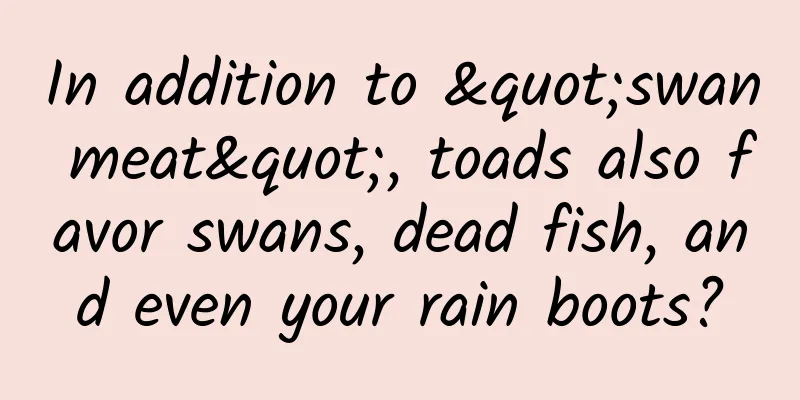How can this mollusk make a comeback after losing its "family heirloom"?

|
Produced by: Science Popularization China Author: Gu Ming Di Lian (popular science creator) Producer: China Science Expo There is a magical weapon in the world that can allow anyone who holds it to survive for hundreds of millions of years. This is the radula unique to mollusks . It is a long saw containing countless tiny chitin "teeth" wrapped in a mouth ball formed by muscles. When the muscles work, the radula can gnaw off algae like a file, drill through shells, scrape off any hard food that exists in nature, and even grind cement. The snail's radula (m) and oral bulb muscles (red and orange) act like a saw to scrape food. (Image source: Wikipedia) With their radula, mollusks have gained the ability to eat hard objects and debris that other animals cannot eat, greatly expanding their food sources. This also allows mollusks to suffer minimal losses in each mass extinction event and become more prosperous. Radula: A key organ in crawling slugs The radula has been passed down from generation to generation by mollusks. Almost all modern gastropods, such as snails, slugs, and conchs, rely on the radula to survive, using it to gnaw on debris, algae, and shellfish to obtain energy for survival. In the world of mollusks, there is a saying that describes their dependence on the radula: "Without the radula, a crawling slug is no different from a worm." The radula in the snail's mouth helps them grind their food. (Photo source: veer photo gallery) However, there is a type of sea slug that is not satisfied with a life of gnawing, and they are the Aglajidae . Using its file-like teeth to slowly grind food and chew it, it can eat more food than other animals, but its speed is far inferior to other animals. Most of the animals that can be eaten are slow-moving algae shellfish, and it is wishful thinking to catch nutritious and fast-moving animals such as sandworms, flatworms, and worms by chewing. So, how do we open up new food sources? Manatee: How does it eat without its radula? Looking at it from a broader perspective, the sucking and swallowing method used by fish is the most suitable for sea slugs to learn from. They use the muscles and bones in their mouths to create a strong current of water, forming negative pressure, and quickly sucking small animals into their mouths. Big fish eat small fish by sucking (Photo credit: tenor) Although the pseudo-manatees do not have the bones and muscles of fish, they have also begun to develop their own sucking and swallowing skills. They have greatly expanded the mouth ball that originally contained the radula to occupy almost half the size of the body, and used muscle contraction to generate huge suction to suck the prey into the body. Biuve fulvipunctata (Image source: Wikipedia) However, when they suck and swallow prey, the original "artifact" radula becomes a hindrance that increases friction and hinders inhalation. On the one hand, there is a new way of hunting, and on the other hand, there is the ancestral feeding magic weapon. The manatee chose to make a bold decision and directly abandon the radula . They have since lost the ability to chew and gnaw and are excluded from the mainstream diet. Let me use a metaphor to explain the situation of the false manatee at this time: other sea slugs laughed at it for imitating others, and even wanted to "expel it" because it had no radula, loved to eat meat, and had "violent habits", which did not match the gentle and timid style of sea slugs. The hungry false manatee had no choice but to leave a message to the group, "Thirty years in the east, thirty years in the west, don't bully the young and poor!", then crawled out of the sand where it was hiding and left without looking back. However, no matter how grandiose your words are, you still have to fill your stomach. The first target of the pseudo-manatees was the flatworms crawling all over the sand. They are small worms with two small tails, small in size, brightly colored, easy to spot, and soft in body, without shell protection, and crawling slowly, making them a good target for sucking and swallowing. But the problem is that these flatworms dare to flaunt their bright colors because they are poisonous, and most predators are helpless. Fortunately, the sea slug family has a unique skill of "poison", and is an expert in resisting and using poison. This naked sea cow, called Chelidonura, has specialized for the flatworm's toxins, and can not only resist the flatworm's toxins, but can also use food as a shield and use toxins to ward off predators. In this way, they can crawl on the sand in a "gorgeous" manner, showing off their beautiful bodies. The beautiful swallowtail cowfish (Chelidonura hirundinina), also known as the manatee, has bright colors. (Image source: Wikipedia) The swallow-tailed sea cow looks noble and elegant. They are dressed in a velvety mantle with bright stripes of blue, green, red and other colors. The mantle forks at the back of the body to form two long tails, one longer than the other, just like wearing a tuxedo. These two tails are not just for decoration, they can also imitate the shape of food flatworms, making it easier to blend in and wait for an opportunity. However, the basic structure of sea slugs limits their sensory abilities. The eyes of the pseudo-manatee are extremely small, their vision is extremely poor, and the ring of sensory bristles around the mouth is almost their only sensory organ. The swallowtail sea cow sniffs the sand for traces of the flatworm, then slowly crawls closer. When it feels the bristles touch the flatworm, the sucking reflex is triggered almost instantly. As a small mouth is stretched out, the muscular cheek balls with strong suction force quickly contract. Without the resistance of the radula, the flatworm is sucked into the mouth by the strong negative pressure in the blink of an eye. The suction speed is so fast that no details can be recognized. After just 15-20 seconds, the flatworm is crushed by the powerful muscles of the cheek balls, and the pulverized shell is spat out, leaving only the nutrient-rich liquid inside waiting to be digested. The sensory bristles of the blue velvet swallowtail (Chelidonura varians). The light red mass in front is their food flatworms. (Image source: Reef to Rainforest Media) Flatworms are so small and defenseless that the sea cow can eat them at a leisurely pace, swallowing them one by one in small, graceful sips. However, eating only small flatworms does not make a powerful predator. If you want to "return home in glory" and show your ability to your family, you have to try to prey on larger animals . Another species of manatee, Melanochlamys, chose lugworms and nemerteans as its food. It feeds on some long, strip-shaped sandworms that are common in coastal areas. These worms are large, have tough muscles and segments, and are highly elastic. When fully stretched, they can reach three or four times the size of their contracted state. In contrast, the melanochlamys, which are only 1.5-2.5 cm long, are like dwarfs. Eating sandworms is a struggle. The sandworms in the sand by the sea have strong muscles and excellent elasticity. (Image source: Wikipedia) Melanochlamys (Image source: Nudibranch Domain) The black dugong lives on the mudflats of estuaries. Their bodies are long and cylindrical, and are uniformly black. They do not look as beautiful as the swallowtail dugong, but their black body color allows them to blend in with the mud and provide protection. Like the swallowtail sea cow, they also rely on sensory bristles to find food and use muscular cheek bulbs to suck and swallow prey. However, this device immediately has problems when eating large prey. Ideally, they look for sandworms that have burrowed in the mud, suck the worms in quickly like slurping flour, and crush them with their muscular stomachs. However, people often find them buried upside down in the sand when the tide recedes, with their tails up and their butts facing the sky, leaving them motionless in the sun, or even being dried into slugs. When people pulled them out, they found that there were parts of worms in their mouths. It turned out that when they sucked the worms, some larger and more solid worms could shrink in time. Although half of the worm's body had been sucked into the stomach of the slug, the other half could still get stuck in the hole, making it impossible for the black sea cow to pull them out. Since they have no teeth and tongue, they cannot chew and cannot bite off the part they have swallowed. However, they are still stubborn and refuse to give up the food. They are forced to get stuck at the entrance of the worm's cave with their buttocks facing the sky. After 5-6 hours, some of the food in their stomach is digested and the black manatee can get out. If they happen to encounter low tide, they will be sunburned to death. Another amazing thing is that when scientists feed them with sandworms in the fish tank, because the feeding sandworms are not in the hole, the black cowfish can attack from both the head and tail. If two sea slugs happen to be one at the head and one at the tail, trying to swallow the same worm, the two sea slugs will hit each other head to head when they suck the middle of the worm. The two sea slugs are still stubborn and neither of them will give in, so they sit head to head for several hours until they digest the parts in their stomachs and can separate from each other. If you want to eat big ones, you must first make yourself bigger It seems that the way sea slugs suck and swallow is not suitable for preying on large animals . Without the help of the radula, they cannot cut up their prey, but the lost radula cannot grow back. So what should they do? The manatees chose to "fly with strength". They are well versed in the theory of relativity. If they grow bigger, wouldn't their prey become smaller? As a result, the genus Navanax has the most peculiar body configuration among the manatees. The giant manatee can reach a size of 20cm. (Image source: iNaturalist) Their cheek bulbs are greatly enlarged, and almost half of their body is made up of these oversized cheek bulbs. The cheek bulbs can also be completely turned outward to form a huge mouth. When the huge mouth touches the prey, it will suck it in and then quickly retract, generating huge suction force and instantly sucking the prey into the body. With a body size of more than 20 centimeters, the spineless manatee can swallow almost all animals smaller than them , whether it is insects, shrimps, or even fish. Equipped with this "super weapon", the spineless manatee has finally become a powerful predator in theory. The body structure of the pseudo-manatee, showing the cheek bulbs extended (left) and retracted (right). (Image source: the seaslug forum) However, in order to hunt, not only "hardware" is needed, "software" is also necessary. Their sensory organs and brains are still unable to get rid of the influence of sea slugs, and their level is quite low. Unless fish and shrimp do not have eyes, it is difficult to be caught by sea slugs that crawl slowly like snails. Whenever the pseudo-manatee fails to catch fish and shrimp, the sea slugs always "watch" around - after all, on the sandy land where the pseudo-manatee lives, there are a large number of sea slugs that eat algae and mud. Although they can't say anything, for the manatees that have deviated from the mainstream diet and ventured out on their own, this is a silent "taunt". In their grief and anger, the spineless sea cows are constantly trying new types of food. For them, the most suitable food should be in the shape of long strips, easy to swallow, soft in texture, without hard shells and spines, and most importantly, slow in movement and easy to search... Wait, isn't this a sea slug ? A stingless sea cow preparing to eat a sea slug (Image source: The Sea Slug Forum) The advantages of feeding on sea slugs are not limited to this. For the pseudo-manatees, which are originally from the same species, there is even a ready-made "radar" available. All sea slugs are hermaphrodites, but they need two different individuals to mate. Therefore, in order to find potential partners, they have a "mucus search" mechanism in their basic structure. By finding and identifying the mucus traces left by the other party when crawling, the sea slug can find the other party just like following the blood trail left by the injured prey. The false sea cow combined this ability with its own search organs, the sensory bristles, to create a top-secret weapon for finding sea slugs - a circle of curved oral ridges around the mouth, which are lined with abundant sensory bristles. They can detect complex sugars such as mucopolysaccharides in traces of mucus and identify the pheromones in them, thereby determining the type and trajectory of the opponent. Close-up of the head of the pseudo-manatee, showing the oral ridge in the front and the tiny eyes above it. (Image source: The Sea Slug Forum) There are three steps to launching an attack: identification, pursuit, and hunting. Now, the equipment for identification and hunting has been completed, and everything is ready, only tracking is needed. In order to catch up with its prey, the spineless sea cow has greatly enhanced the cilia and muscles of its ventral foot, giving it the highest speed among sea slugs . Although it is still far behind fish and shrimp, this speed is enough as long as it can catch up with other sea slugs. Since then, there are fewer sea slugs hiding all day, eating grass and mud, and more bold, active, swift and fierce predators. After successful recognition, they will start to speed up and chase along the slime trail. Although the target sea slug wants to escape, its slime trail has been locked, and even if it hides to the ends of the earth, the pseudo-manatee can always find it. Trying to escape by speed is something the manatee will never allow. After catching up with the prey that cannot escape, the manatee stretches out its bloody mouth from behind, quickly wraps it up, and then swallows it in one bite. Losing its radula is so wonderful at this moment. The sea slug that "laughed" at it in the past is swallowed smoothly in one bite today. The manatee has proved the feasibility of its strategy and avenged the "exclusion and oppression" of its family. The spineless sea cow extends its mouthparts to prepare for prey, and the difference in size between it and the ordinary sea slug can be seen. (Image source: iNaturalist) Error in judgment: I eat myself? However, using "mucus search" to find prey still has its shortcomings. Regardless of the size of the sea slug, its pheromone types are almost the same, so they cannot identify the size of their prey, and sometimes they chase sea slugs that are much larger than them, and their congenitally insufficient vision cannot allow the pseudo-manatee to make accurate judgments. They still suck and swallow, but because the prey is too large and they don't have a tongue to chew, they can only suck it onto the prey and be carried away by it. They also can't distinguish their own mucus, and sometimes even mistake their tail for prey and circle along the mucus they walk through. Fortunately, their bodies are not slender enough, otherwise we can see the sea slug version of the "snake biting its tail" spectacle. At the same time, because the skills originally used to find breeding objects were changed to be used for hunting, this half-finished system had bugs when it really needed to find objects. When two manatees meet along the mucus trail, the first thing that is "triggered" is not mating behavior, but feeding reflex. Both manatees extend their mouthparts and try to eat each other. If one is swallowed, then this affectionate meeting immediately turns into a murder scene; and if neither can swallow the other, it means that the two are almost the same size and have matured. At this time, the manatees can react and start mating with each other to produce the next generation. In the bumpy and unexpected hunting life, the manatees paid a lot of individual costs. They were either sunburned to death, starved to death, or eaten by their own kind, all because they lost their family heirloom - the radula . Conclusion Despite this, the dugong has managed to survive countless generations and live with its algae-eating and mud-eating family into the modern era. They live a lively life in the sea, moving on the sand every day, actively hunting, and showing off their beauty and vitality without any concealment. 70 different kinds of food were found in their stomachs, of which 94% were living organisms that could move, and this hunting ability belonged only to them. In any case, the sea cows have completed the counterattack against their family - they have proved to the world on their own that sea slugs can also be powerful predators. References: [1]GOSLINER T M. Systematics and phylogeny of the Aglajidae (Opisthobranchia: Mollusca)[J]. Zoological Journal of the Linnean Society, 1980, 68(4): 325-360. [2]Anthes N, Michiels N K. Reproductive morphology, mating behavior, and spawning ecology of cephalaspid sea slugs (Aglajidae and Gastropteridae)[J]. Invertebrate Biology, 2007, 126(4): 335-365. [3]Zamora A, Malaquias MA E. Diet preferences of the Aglajidae: a family of cephalaspidean gastropod predators on tropical and temperate shores[J]. 2015. [4]Rato J Á O, Gutiérrez MC, Abad LM, et al. What the shell tells in Aglajidae: a new genus for Aglaja felis (Opisthobranchia: Cephalaspidea)[J]. Revista de la Academia Canaria de Ciencias:= Folia Canariensis Academiae Scientiarum, 2014, 26(1): 83-119. [5]Miao K, Liao M, Li B, et al. Complete mitochondrial genome sequences of sea slug Melanochlamys sp. (Cephalaspidae: Aglajidae)[J]. Mitochondrial DNA Part B, 2020, 5(3): 2382-2383. |
<<: New research finds that eating this kind of food can improve your liver!
Recommend
Operation strategy of traffic-generating communities
Community is a relatively important part of priva...
What is Google overseas promotion and what are the advantages of Google promotion?
Google promotion, in layman's terms, is to us...
China Automobile Dealers Association: 2021 New Energy Commercial Vehicle Market Information Weekly No. 17
1. Data: New Energy Logistics Vehicle The market ...
Who will take the lead in the new trend of shoe washing machines?
Have you ever had this experience: every time you...
Analysis of WeChat Reading’s user growth strategy!
Even with the support of WeChat, a huge traffic p...
Seize the peak season for wedding dress marketing and make your promotion more effective!
The beginning of autumn has passed in the blink o...
How to review an event you have organized? From which aspects?
This question comes from a reader's question,...
Tesla: Tesla's sales in China reached 137,200 units in Q1 2025, a three-year high
Tesla recently announced its first quarter delive...
Wang Xuehong is obsessed with VR: HTC CEO may fall into industry misunderstanding
At the recently concluded MWC2016, VR once again ...
Build a user rating system from 0 to 1
Huahua is a product operator at an e-commerce com...
What are the Douyin store operation skills? Douyin store operation skills and practice
To open a store on the Douyin platform, you actua...
Data statistics interface-message analysis data interface
WeChat public platform launched an invitation-bas...
The toxicity is 68 times that of arsenic! A woman almost died after eating it... Many people love to eat it →
Not long ago, Ms. Wang from Fuzhou, Fujian almost...
I drank milk after eating oranges and went to the emergency room in the middle of the night! The truth about why milk and oranges cannot be eaten together is this
Expert in this article: Dr. Tian Jing, attending ...
How to evaluate the pros and cons of multiple promotion channels?
I have always wanted to write an article like thi...









